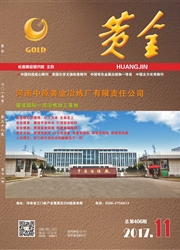

 中文摘要:
中文摘要:
萑香洼金矿床赋存于中元古界熊耳群安山岩中,矿体受断裂破碎带控制。萑香洼金矿成矿流体液相成分以K^+、Na^+、Cl^-离子为主,其次是SO4^2-、Ca^2+、Mg^2+和F^-离子,少量Li^+和HCO3^-离子。流体气相成分以H2O为主,其次是CO2,少量CO、N2、CH4。流体的盐度比较低,其范围为0.90%~7.59%wtNaCl,流体的pH值在6.60~7.10之间,成矿的温度和压力范围分别为180℃。265℃,压力为150×10^6~250×10^6Pa,表明成矿流体具有中一低温、低压和低盐度的特点,流体属于NaCl=H2O—CO2体系。流体的溶液主要来自岩浆水。含矿流体在迁移过程中,与围岩发生了强烈的流体一岩石反应,伴随成矿流体及其周围的物理化学争件发生突变,成矿物质在有利成矿部位沉淀,富集成矿。
 英文摘要:
英文摘要:
The Huanxiangwa gold deposit occurs in a ductile shear zone in andesite of the middle Proterozoic Xiong' er Group, and the orebedy is controlled by fracture zone. The ionic components in the fluid inclusions are mainly K^+ , Na^+ and Cl^-, with minor SO4^2- , Ca^2+ , Mg^2+ and F^-, and little Li^+ and HCO3^- The gas components are mainly composed of H2O,with minor CO2, and little CO, N2 and CH4. The ore-forming fluid exhibits pH value ranging from 6.60 to 7.10, the salinity of which ranges from 0.90% to 7.59% (equal NaCI). Fluid inclusion data suggest that temperature and pressure during fluid-rock interactions were 180℃~265℃ and 150 × 10^5~250 × 10^5 Pa in gold deposition stage. The fluid belongs to NaCl- H2O - CO2 system, mainly deriving from magnmtic water. During fluid-rock interaction, the ore forming components are not equally mobile. MetaUogenic material lay down, concentrate and form deposit, with mutational change of oreforming fluid and physical-chemical condition around it.
 同期刊论文项目
同期刊论文项目
 同项目期刊论文
同项目期刊论文
 期刊信息
期刊信息
